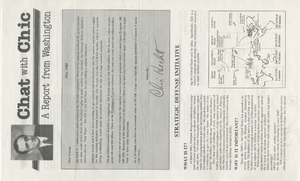Search the Special Collections and Archives Portal
Search Results
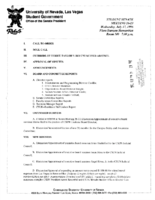
Meeting minutes for Consolidated Student Senate University of Nevada, Las Vegas, July 17, 1996
Date
1996-07-17
Archival Collection
Description
Includes meeting agenda and minutes, along with additional information about the constitution of the Nevada Student Alliance, senate positions, and bylaws.
Text
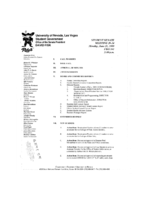
Meeting minutes for Consolidated Student Senate University of Nevada, Las Vegas, June 21, 1999
Date
1999-06-21
Archival Collection
Description
Includes meeting agenda and minutes, along with additional information about bills, bylaws, advertisements, and maintenance agreements.
Text
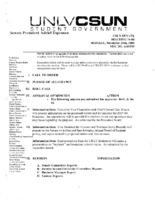
Meeting minutes for Consolidated Student Senate, University of Nevada, Las Vegas, November 28, 2005
Date
2005-11-28
Archival Collection
Description
Includes meeting agenda and meeting minutes, along with additional information about senate bills and Rebel Yell bylaws.
Text
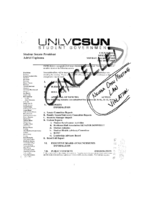
Meeting minutes for Consolidated Student Senate, University of Nevada, Las Vegas, December 05, 2005
Date
2005-12-05
Archival Collection
Description
Includes meeting agenda, along with additional information about senate bills and bylaws.
Text
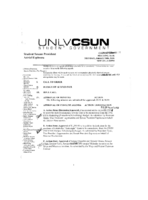
Meeting minutes for Consolidated Student Senate, University of Nevada, Las Vegas, January 30, 2006
Date
2006-01-30
Archival Collection
Description
Includes meeting agenda, along with additional information about senate bills, bylaws, and Contract for Services.
Text
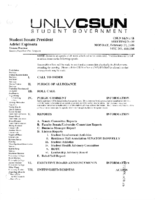
Meeting minutes for Consolidated Student Senate, University of Nevada, Las Vegas, February 27, 2006
Date
2006-02-27
Archival Collection
Description
Includes meeting agenda and minutes, along with additional information about senate bills.
Text
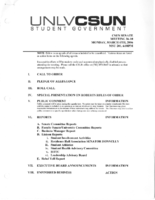
Meeting minutes for Consolidated Student Senate, University of Nevada, Las Vegas, March 06, 2006
Date
2006-03-06
Archival Collection
Description
Includes meeting agenda and mintues, along with additional information about bills.
Text
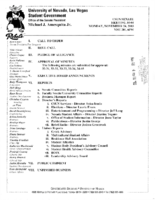
Meeting minutes for Consolidated Student Senate, University of Nevada, Las Vegas, November 24, 2004
Date
2004-11-24
Archival Collection
Description
Includes meeting minutes and agenda. CSUN Session 34 Meeting Minutes and Agendas.
Text
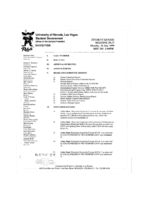
Meeting minutes for Consolidated Student Senate University of Nevada, Las Vegas, July 26, 1999
Date
1999-07-26
Archival Collection
Description
Includes meeting agenda and minutes, along with additional information about bylaws, bills, and letters.
Text
Pagination
Refine my results
Content Type
Creator or Contributor
Subject
Archival Collection
Digital Project
Resource Type
Year
Material Type
Place
Language
Records Classification

